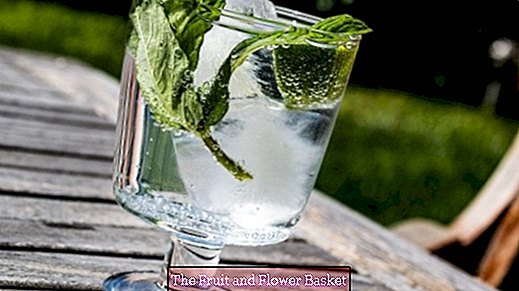Trend drink Gin make yourself
What a hype! Gin has literally been on everyone's lips for some time now. Was he only a marginal phenomenon ten years ago as a "Tonicwater with Fusel and lemon slice?", There are today countless brands that are traded expensive and over the connoisseurs rave about. You are not allowed to mix at all, at most with exactly matched and extremely expensive tonics. What is gin actually exactly and you have to spend a fortune on it?
Juniper, Genver, Gin? Juniper halt.
Juniperus is the Latin term for juniper and here we are already at the starting point. The oldest mention can be found in the Netherlands in the mid-17th century, where a doctor named Francois de la Boe got talked about with a juniper schnapps and the? Gin? made bearable. When William III of Orange-Nassau finally became king of England, he simply took his favorite drink with him. And that was the beginning of a success story. Soon English distilleries took over the production of juniper schnapps. Gordon Co. was known in London in 1760, and Tanqueray was built in 1830. In Finsbury, a suburb of London famed for its spring water, the London Dry Gin was burnt four times.
In Germany, Gin was long forgotten and reduced to supermarket goods until 2010, the Monkey 47 was created in the Black Forest and triggered a true gin hysteria. Today you get in the retailer numerous gins.
What is Gin and how is it done?
Gin is a grain alcohol, which was flavored in any case with juniper and (mostly) coriander. He must in Germany at least 37.5% vol. be strong, but usually the higher-percentage gins are more harmonious and aromatic. The spices that are added are varied and become? Botanicals? called. Juniper is always there, but in addition, for example, coriander, lemon peel, angelica, wine and rose petals, pepper, almonds, cassava, violet root or licorice are condiments. Forty-seven Botanicals are actually used in the Monkey 47, but only 10 in the Bombay Sapphires from England. That's why no gin tastes like the other.
Botanicals can not be mashed like fruits or grains to make alcohol, which can then be distilled. The gin is neutral alcohol with 96% vol., Mostly from grain flavored with the Botanicals. Either by maceration, the cold extract, in which you mix the Botanicals with water and alcohol and just let stand for a while. During the digestion, the hot extract, the whole thing is heated to 70 degrees. The result is then distilled again for some gins. Distilled Gin? but may only call itself, which resulted from percolation. In the process, the neutral alcohol is distilled and sieves with the aroma materials are suspended in the pot still. During the distillation process, the aromatics are dissolved by the hot vapors. Another type of percolation is to pour the hot alcohol (usually several times) over the sieves with the botanicals. Of course, the processes can be combined, so an excerpt formed by maceration can be aromatized more percolation.
My own gin
Because gin is also wonderfully pure by maceration, it is also suitable for DIY. It is not recommended to use "Gin Kits", which usually consists of a cheap bottle of vodka, sieves, a funnel, empty bottles and spices. You can do this better yourself and experiment with it wonderfully. Essential are a good vodka and juniper berries. First add the vodka with juniper berries (for 750 ml you need 2 tbsp) and let it stand for 24 hours. Then filter out the berries and add with the desired remaining spices. Let it rest for 12 hours. Then filter well and fill up. Who owns a small distillery (in Germany allows up to 0.5 liters of mash), can also produce his gin per percolation, but that takes a long time!
The remaining spices? The imagination knows no limits. Recommended are coriander seeds and the peel of citrus fruits, but also possible ginger, bay leaf, various types of pepper, nutmeg, fennel seeds, allspice, lavender, rosemary, angelica, but also rose petals, cassia, violet root or licorice. The magazine Stern, for example, takes ¾ tsp coriander seeds ¼ tsp fennel seeds, ¼ tsp allspice granules, 4 cardamom pods, 2 peppercorns, 1 bay leaf, 1 small branch of lavender, 1 large branch of rosemary, 1 small piece of dried grapefruit and lemon zest.
In the beginning, less is more? and? shorter is better ?, if the gin still tastes too lukewarm, you can still aromatize. Otherwise it remains to say: well then, Gin Gin!





